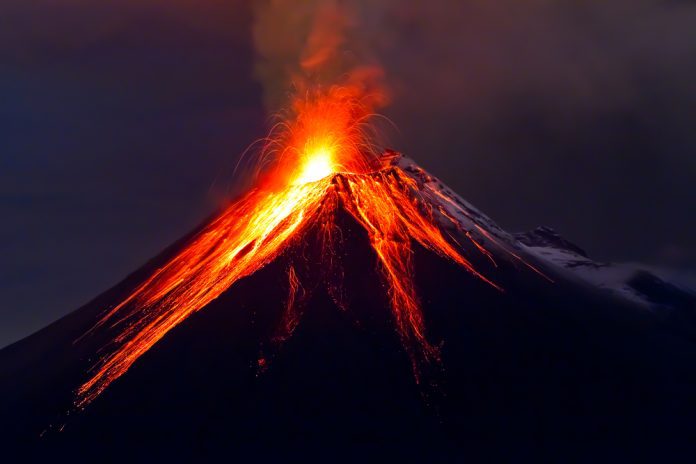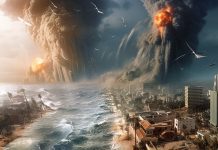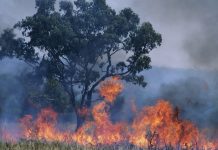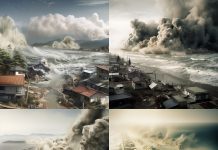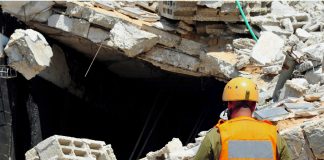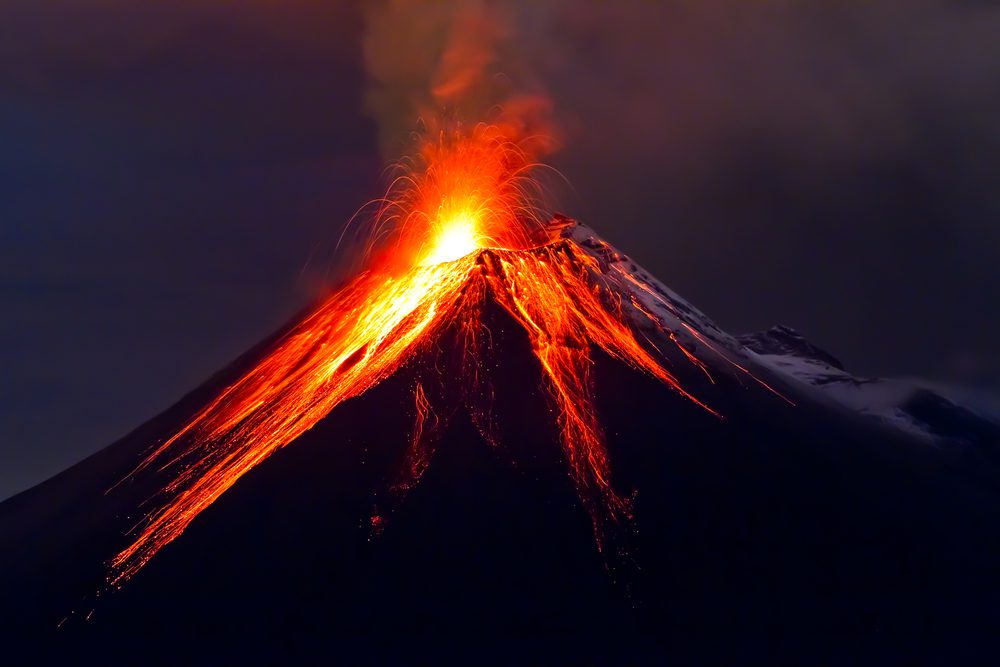
Unleashing the Fury of Mother Nature: A Comprehensive Guide to Volcanoes and their Explosive Eruptions
Greeting the curious explorer, “Volcanoes 101” is a deep dive into the captivating realm of volcanic action. Whether you’re a seasoned nature lover or just starting your journey into Earth’s geological wonders, this comprehensive guide will provide valuable insights and knowledge about volcanoes.
In this post, we’ll explore the various forms of volcanoes – shield, stratovolcano (composite), and cinder cone – each with its own distinctive features and formation mechanisms. Furthermore, we’ll examine the geological processes behind eruptions, including the formation of magma within Earth’s mantle and the interactions in tectonic plates that drive volcanic activity.
To conclude our Volcanoes 101 series, we’ll discuss the scientific method of measuring volcanic eruptions through the Volcanic Explosivity Index (VEI) scale. We’ll explore various VEI classifications from 0 to 8 while providing examples of major historical eruptions according to their respective VEI scale rankings.
Earth’s crust and Volcanoes
The Earth’s crust is the outermost layer of our planet. It consists of both continental and oceanic plates that float on a sea of molten rock called magma. The movement of these tectonic plates causes volcanic activity, earthquakes, mountain building, and other geological phenomena.
Tectonic Plates
The Earth’s crust is made up of several large pieces known as tectonic plates. These plates move around due to convection currents in the mantle below them. When two or more plates collide or separate from each other, it can cause volcanic eruptions.
For example, when an oceanic plate collides with a continental plate, the denser oceanic plate sinks beneath, the lighter continental plate in a process called subduction. This creates intense heat and pressure that melts rocks into magma which rises to form volcanoes along the boundary between these two types of crusts.
Volcanic Ash
Volcanic ash is one byproduct produced during an eruption that poses significant hazards to human health because it contains tiny particles, such as glass shards and sulfur dioxide gas, that are harmful if breathed in by humans or animals.
Types of Volcanoes
Classification of volcanoes based on their shape and size is common, allowing us to better anticipate volcanic activity and reduce associated risks. Each type has unique characteristics that influence the way they erupt and interact with the surrounding environment. Understanding these differences can help us better predict volcanic activity and mitigate potential hazards.
Shield Volcanoes: Broad, Gently Sloping Structures
Shield volcanoes are characterized by their broad, gently sloping structure which is formed from layers of fluid lava flows. These eruptions tend to be less explosive than other types due to low-viscosity magma, allowing gases to escape more easily. The largest shield volcano on Earth is Mauna Loa, located in Hawaii.
Stratovolcanoes (Composite): Steep-Sided, Symmetrical Cones
Stratovolcanoes, also known as composite volcanoes, have steep-sided symmetrical cones made up of alternating layers of ash deposits and hardened lava flows. They typically result from highly viscous magma, which traps gas within it, leading to violent explosions when pressure builds up during an eruption. An example of this type of volcano is the iconic Mount St Helens in Washington State.
Cinder Cone Volcanoes: Small, Steep-Sided Hills
The smallest type among all three categories mentioned above, cinder cone volcanoes, are characterized by their small size and steep-sided hills. They form from the eruption of lava fragments that solidify in mid-air before falling back to the Earth’s surface, creating a mound-like structure around the vent. Cinder cones typically have short-lived eruptions with relatively low levels of volcanic ash.
Understanding Tectonic Plates’ Role in Volcano Formation
Volcanic activity is closely related to the movement of tectonic plates, which make up Earth’s crust. Most volcanoes are found along plate boundaries where these massive slabs interact with one another, either through subduction or rifting processes. To learn more about how tectonic plates influence volcano formation and behavior, visit this informative article on volcanoes and plate tectonics.
Exploring the various forms of volcanoes is an intriguing pursuit, each possessing its own distinctive characteristics. Understanding the geological processes behind eruptions is essential for predicting volcanic activity.
Key Takeaway:
This section explains the different types of volcanoes – shield, stratovolcanoes (composite), and cinder cone – based on their shape and size. Interactions between tectonic plates at plate boundaries can majorly impact volcanic activity. Understanding these differences can help predict volcanic behavior and mitigate potential hazards.
Geological Processes Behind Eruptions
Volcanic eruptions occur when molten rock called magma rises through the Earth’s mantle to reach its crust. This process is driven by pressure changes within the Earth as well as interactions between tectonic plates at subduction zones or rifts in the lithosphere. As magma nears the surface, it releases gases that cause explosive eruptions, or more gentle lava flows depending on various factors such as viscosity and gas content.
Magma Formation Deep Within Earth’s Mantle
Magma forms deep within Earth’s mantle, which lies beneath our planet’s outermost layer, known as the crust. The mantle, made up of mainly silicate minerals, is heated to extreme temperatures ranging from 1,400°C to 4,000°C (2,552°F to 7,232°F), allowing the melting of rocks when tectonic plates move. When temperature and pressure conditions are favorable for melting rocks in this region – often due to the movement of tectonic plates – molten material begins its journey toward Earth’s surface.
Tectonic Plate Interactions Driving Volcanic Activity
The majority of volcanic activity occurs along boundaries where tectonic plates interact with one another. There are three main types of plate boundaries:
- Divergent Boundaries: These occur when two plates move away from each other; a new ocean floor is created by rising magma filling up gaps left behind.
- Convergent Boundaries: When two plates collide, one is forced beneath the other in a process called subduction. This can lead to magma formation and volcanic activity.
- Transform Boundaries: Plates slide past each other horizontally, occasionally leading to earthquakes but rarely causing volcanic eruptions.
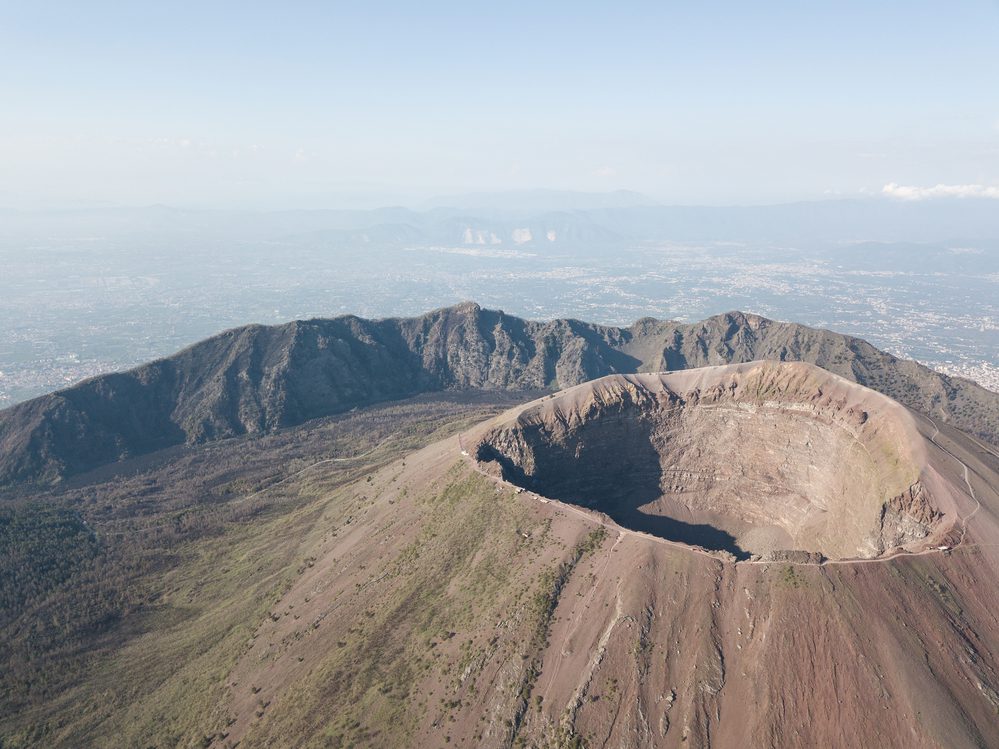
The most active volcanoes are typically found along convergent boundaries where subduction occurs. For example, the Pacific Ring of Fire – home to 75% of Earth’s volcanoes – is formed by several tectonic plate interactions around the Pacific Ocean basin.
Factors Influencing Eruption Style
Different factors influence whether an eruption will be explosive or effusive (lava flow). These include:
- Magma Composition: Magma with high silica content tends to be more viscous and trap gases within it; this leads to explosive eruptions when pressure builds up. In contrast, low-silica magma allows gases to escape more easily, resulting in lava flows such as those seen at Hawaii’s Mauna Loa.
- Gases Dissolved in Magma: The amount and type of gas dissolved in magma also play a crucial role in determining eruption style. Gases like water vapor and carbon dioxide increase explosivity due to their expansion upon reaching lower pressures near Earth’s surface.
- Tectonic Setting: As mentioned earlier, certain types of plate boundaries are more conducive for specific eruption styles based on how they interact with one another during geological processes.
Researchers are continuously observing and analyzing volcanoes globally to gain further insight into the intricate dynamics that drive volcanic activity and anticipate potential risks.
Geological processes driving eruptions are intricate and in flux, necessitating us to stay abreast of recent studies for greater comprehension. With this knowledge, we can now move on and explore how volcanic activity is measured using the VEI scale.
Key Takeaway:
When molten rock from the planet’s mantle pushes up to its outer layer, it can result in an eruption of gases that lead to either a violent or mild outpouring of lava. The majority of volcanic activity occurs along boundaries where tectonic plates interact with one another, and factors such as magma composition and gas content influence eruption style.
Measuring Volcanic Eruptions with VEI Scale
Volcanic eruptions are awe-inspiring and potentially devastating natural events. To better comprehend the magnitude of these occurrences, scientists devised the Volcanic Explosivity Index (VEI) scale to classify volcanic eruptions according to their effects on humans and nature. This measurement system classifies volcanic eruptions based on their impact on both human populations and natural environments.
Understanding VEI Classifications from 0 to 8
The VEI scale ranges from 0 to 8, with each level representing a tenfold increase in eruption volume or intensity. The classifications are as follows:
- VEI 0: Non-explosive event producing less than 104m³ of tephra (volcanic ash).
- VEI 1: Gentle eruption producing between 104-105m³ of tephra.
- VEI 2: Explosive eruption producing between 105-106m³ of tephra. Example: The 1980 eruption of Mount St. Helens in Washington State, USA.
- VEI 3: Severe eruption producing between 106-107m³ of tephra. Example: The 1815 eruption of Tambora in Indonesia.
- VEI 4: Cataclysmic eruption producing between 107-108m³ of tephra. Example: The infamous AD 79 eruption of Mount Vesuvius that destroyed Pompeii and Herculaneum in Italy.
- VEI 5: Paroxysmal eruption producing between 108-109m³ of tephra. Example: The devastating eruption of Krakatoa in Indonesia back in 1883 caused tsunamis that killed over 36,000 people.
- VEI 6: Colossal eruption producing between 109-1010m³ of tephra. Example: The catastrophic event at Mount Pinatubo in the Philippines during 1991 was one of the largest eruptions recorded within the last century. Its ash cloud affected global temperatures for several years afterward.
- VEI 7: Super-colossal eruption producing between 1010-1011m³ of tephra. Example: Tambora’s massive 1815 eruption on Sumbawa Island (Indonesia) resulted in what is known as “The Year Without a Summer” due to its far-reaching climatic effects across North America and Europe.
- VEI 8: Mega-colossal eruption producing more than 1011m³ of tephra. These cataclysmic events occurred thousands to millions of years ago but remain important for understanding Earth’s geological history.
By utilizing the Volcanic Explosivity Index (VEI) scale, scientists can better understand volcanic activity patterns around our planet. This knowledge helps inform emergency preparedness efforts and risk assessments related to these powerful natural phenomena. Monitoring active volcanoes like Mauna Loa, located on Hawaii’s Big Island, is crucial for ensuring public safety and minimizing potential hazards.
Volcanic ash is one of the most significant hazards associated with volcanic eruptions. It can cause respiratory problems, disrupt air travel, and damage crops and infrastructure. Volcanic ash is produced when magma interacts with water, ice, or air, and it can travel hundreds or even thousands of miles from the eruption site.
Tectonic plates are another critical factor in volcanic activity. Most volcanoes are located along the boundaries of tectonic plates, where magma can rise to the surface more easily. The movement of these plates can also cause earthquakes, which can trigger volcanic eruptions.
Understanding the Earth’s crust is also essential for comprehending volcanic activity. The Earth’s crust is made up of several large plates that move and interact with each other. This movement can create areas of high volcanic activity, such as the Pacific Ring of Fire.
Overall, studying volcanoes and volcanic activity is crucial for understanding the Earth’s geological history and predicting potential hazards. By utilizing tools like the VEI scale, scientists can better prepare for and mitigate the impact of these powerful natural phenomena.
References:
Key Takeaway:
Scientists use the Volcanic Explosivity Index (VEI) scale to categorize volcanic eruptions according to their magnitude. The VEI ranges from 0 to 8, with each level representing a tenfold increase in eruption volume or intensity. Understanding tectonic plates and the Earth’s crust is crucial for comprehending volcanic activity and predicting potential hazards.
Mauna Loa: A Shield Volcano
Hawaii’s Mauna Loa volcano is considered one of the world’s largest shield volcanoes. Shield volcanoes are formed by lava flows that build up over time, creating a broad, gently sloping mountain. Mauna Loa has erupted 33 times since its first well-documented eruption in 1843.
Despite being one of the most active volcanoes on Earth, Mauna Loa’s eruptions are typically non-explosive and less hazardous to human life than other types of volcanoes, such as stratovolcanoes.
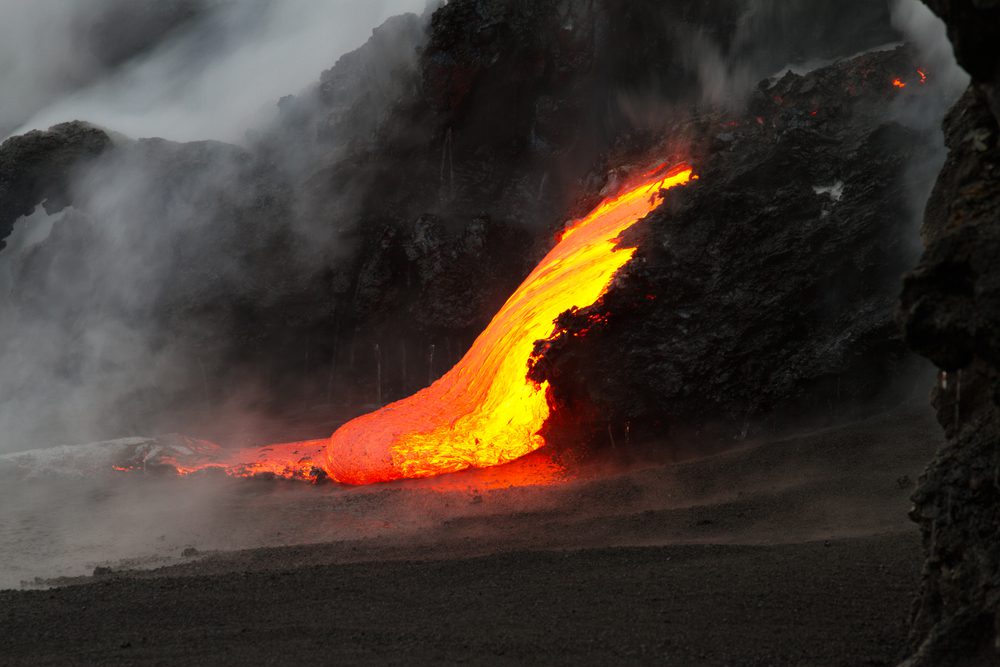
FAQs Concerning Volcanoes
What are 10 interesting facts about volcanoes?
- There are over 1,500 active volcanoes worldwide.2. The Ring of Fire is home to around 75% of the world’s active and dormant volcanoes.
- Volcanic eruptions can create new islands, like Surtsey in Iceland.4. Lava temperatures range from 700°C to 1,200°C (1300°F to 2200°F).5. The largest volcano on Earth is Mauna Loa in Hawaii.6. Olympus Mons on Mars is the tallest known volcano in our solar system.7. Supervolcanoes have erupted with a VEI of at least eight times more powerful than any eruption in recorded history.8. Volcanic ash can cause global cooling by blocking sunlight for months or years after an eruption.9. Geothermal energy generated by volcanic activity provides clean power for millions globally.10. Pumice stones used for exfoliation come from volcanic rock.
What is the basic information about volcanoes?
Volcanoes are openings in the Earth’s crust through which molten rock, ash, and gas can escape. They are formed by tectonic plates moving apart or colliding and can be found on land or under the ocean. Volcanic activity can range from mild lava flows to explosive eruptions that can cause widespread damage and loss of life.
What should I write about volcanoes?
When writing about volcanoes, consider discussing their types (shield, stratovolcano, cinder cone), formation processes, eruption styles, and factors influencing them. You may also explore the monitoring techniques, hazard mitigation strategies, and impacts on climate, ecosystems, and human populations.
What are 3 interesting facts about volcanoes?
- Volcanic lightning occurs during eruptions due to static electricity generated by ash particles colliding in the atmosphere.2. The word “volcano” originates from Vulcan – the Roman god of fire.3. Some volcanic rocks float on water; for example, pumice stones are formed by rapidly cooling lava filled with gas bubbles.
Conclusion
Overall, Volcanoes 101 provides a basic understanding of the different types of volcanoes and the geological processes behind their eruptions. Shield volcanoes have broad slopes, while stratovolcanoes are steep-sided cones. Cinder cone volcanoes are small hills with steep sides. Magma formation deep within the Earth’s mantle and tectonic plate interactions drive volcanic activity.
The Volcanic Explosivity Index (VEI) scale is used to measure volcanic eruptions based on their intensity, ranging from 0 to 8. Understanding this scale can help put major historical eruptions into perspective.






































